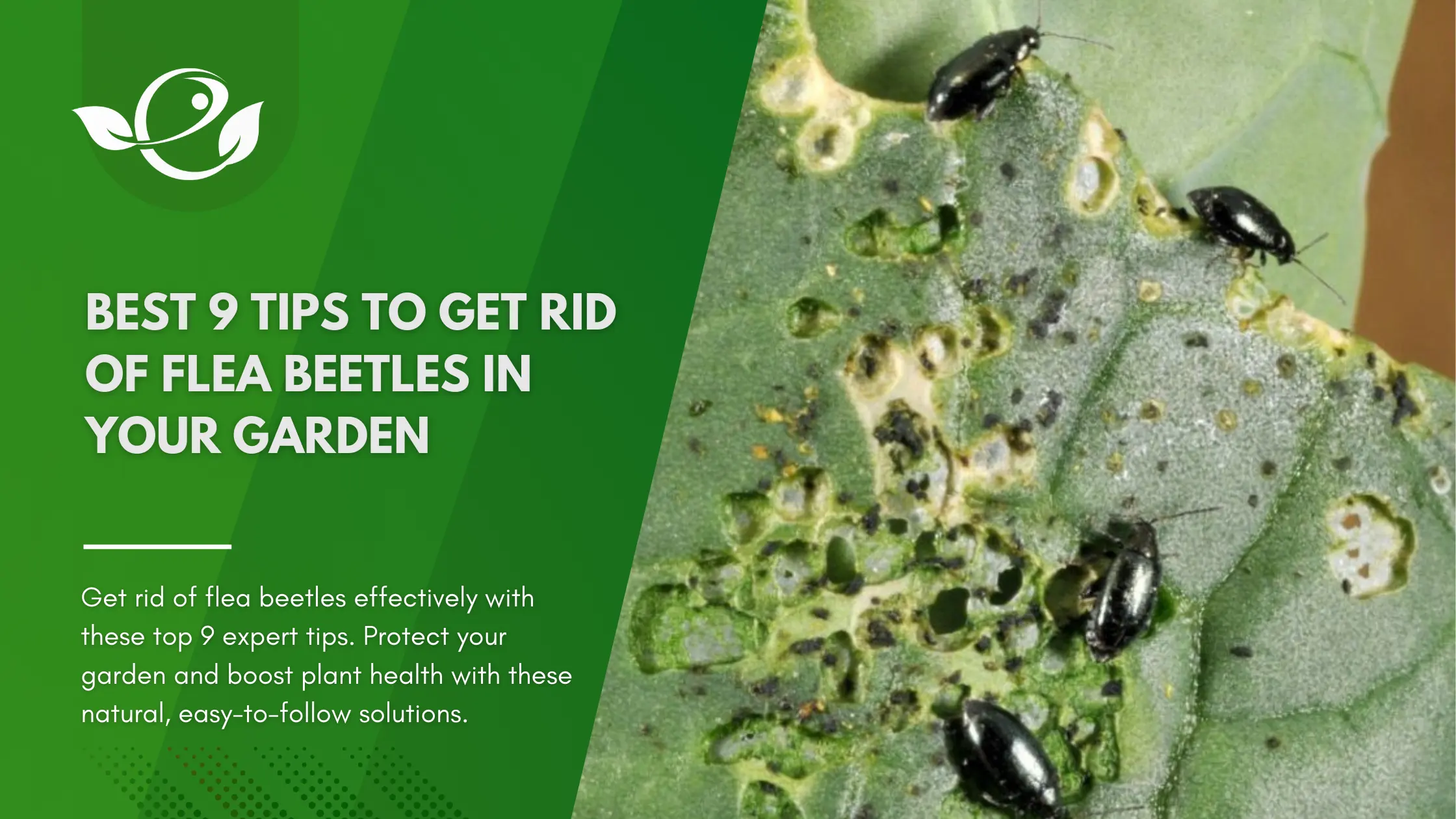Table of Contents
Flea beetles may be tiny, but their impact on a garden is anything but small. Known for the characteristic “shot holes” they leave in leaves, these pests can quickly turn a lush, thriving garden into a distressed, stunted plot. Their rapid activity, as they hop from plant to plant, creates an almost invisible assault, stressing plants and often leaving them vulnerable to further infestations and diseases. If you’ve ever looked out over your garden to see a sudden outbreak of tiny holes or stunted seedlings, chances are you’re dealing with flea beetles.
For gardeners, managing flea beetles is not just about warding off minor inconveniences; it’s about protecting the vitality of your plants and ultimately ensuring a successful yield. These beetles can be particularly problematic in early spring when tender young plants are at their most vulnerable. Without intervention, these pests can spread quickly, moving from one plant to another, and eventually reducing both the quality and quantity of the produce.
But the battle against flea beetles is not without its solutions. In this article, we’ll explore nine expert tips to tackle flea beetles head-on, so you can reclaim your garden. Each tip is designed to help you take practical, effective steps to prevent and control flea beetle infestations, and, importantly, to do so in a way that preserves the health and integrity of your garden.
Understanding Flea Beetles and Their Life Cycle
The first step in any pest control effort is understanding your opponent. Flea beetles are small, dark, shiny beetles, typically ranging in color from black to metallic blue or green. They belong to the family Chrysomelidae and are well known for their distinctive jumping ability, which they use to evade threats. These tiny pests are most active in early spring, with a life cycle that includes egg, larval, and adult stages.
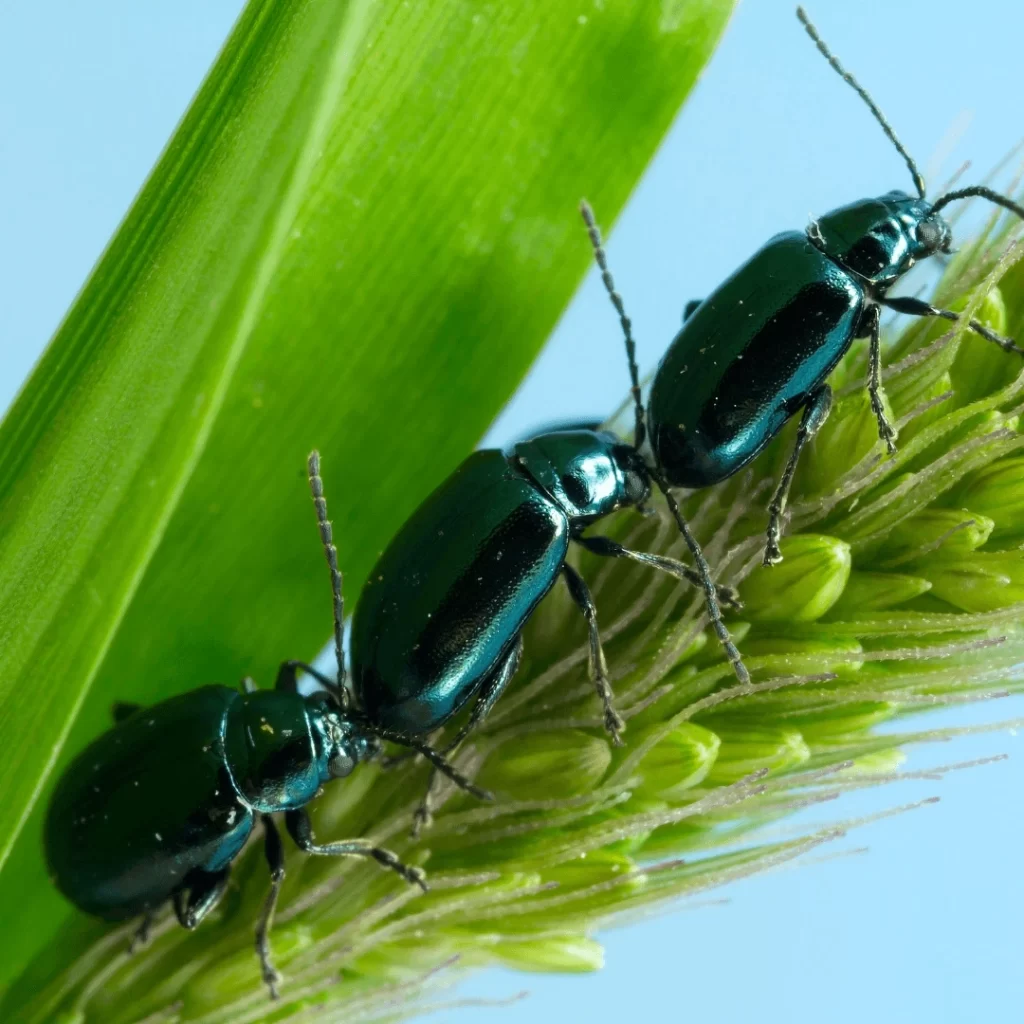

Flea beetle eggs are typically laid in the soil around plant roots, where larvae feed on underground parts, weakening plants before they even have a chance to grow. This life cycle knowledge is invaluable when it comes to timing your control measures effectively. By targeting both adult and larval stages, you can significantly reduce flea beetle populations and protect your plants from ongoing damage.
What caused it?
There are many species of flea beetles affecting a variety of plants. Most adults are small (about 4mm), dark-colored, sometimes with a shiny or metallic aspect. They have an oval body and large hind legs for jumping. The larvae live in the soil and feed on roots or tubers whereas adults feed on young plants. Most flea beetles hibernate under plant residues, in the soil or on weeds around fields. They become active again during the spring. Depending on species and climate, 1-4 generations grow per year. Flea Beetles prefer warm, dry conditions.
Symptoms of Flea Beetles
Adults feed on leaves. The damage appears as small scattered shot-like holes (1-2 mm), and small chewing cavities that do not cut across the leaf blade (pitting). A slight yellowing may occur around the damaged tissue. Tubers are bored with narrow, straight tunnels of varying depths depending on the species in question. Small raised bumps may also appear on the tuber surface as part of the damage.

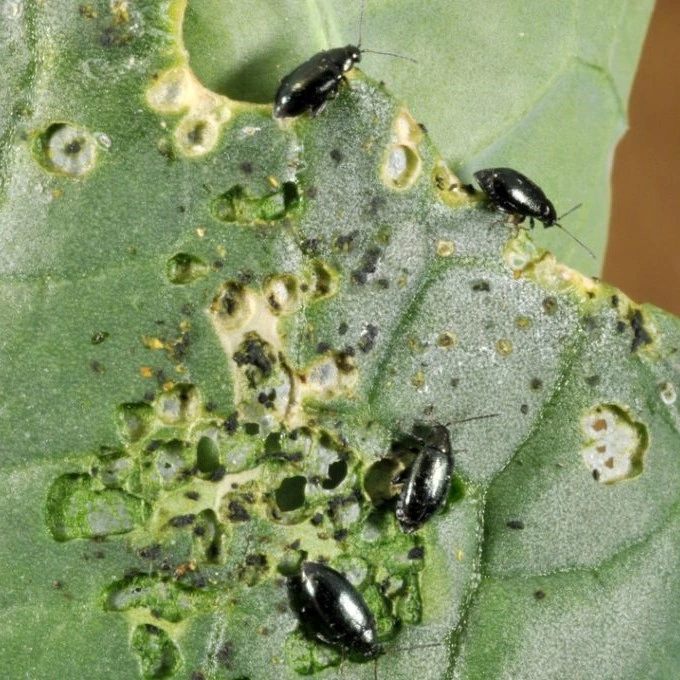
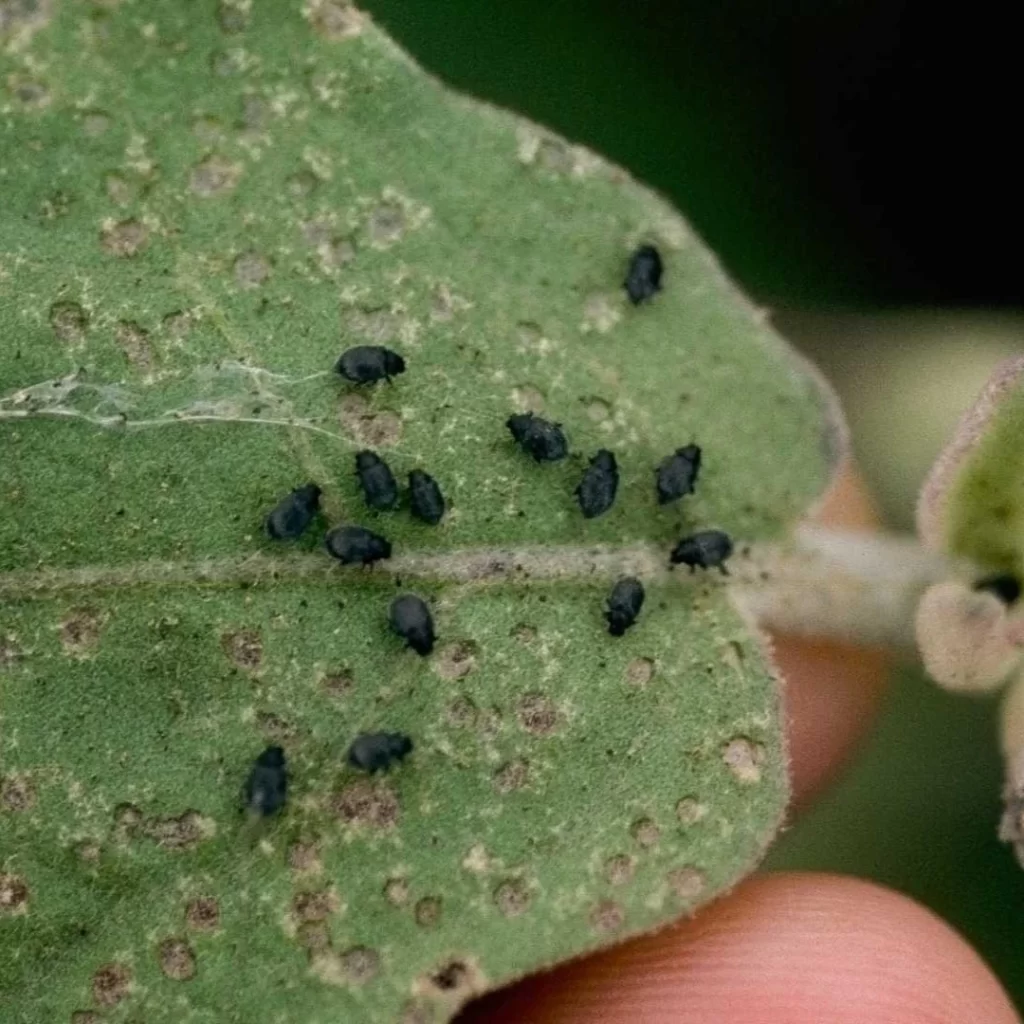
Best 9 Tips To Get Rid of Flea Beetles In Your Garden
1. Inspect and Monitor Plants Regularly
Monitoring is a crucial yet often overlooked step in managing garden pests. Regular inspections allow you to detect flea beetles early and take action before they spread. The best time to check for flea beetles is during the warmer parts of the day, as this is when they are most active.
How to Monitor for Flea Beetles?
- Visual Inspection: Look for tiny holes in leaves, known as “shot holes,” as well as stunted growth in young plants. Flea beetles often target the tender foliage of seedlings and young transplants.
- Sticky Traps: Yellow sticky traps can be an effective way to monitor flea beetle activity. These traps attract the beetles and capture them, giving you a clear indication of flea beetle presence.
Regular monitoring enables you to spot flea beetles early and intervene before they cause significant damage. This can be particularly helpful in spring when flea beetle populations are at their highest.
2. Practice Crop Rotation
Flea beetles are especially drawn to specific plants, like those in the Brassicaceae family, which includes crops like cabbage, kale, and broccoli. By practising crop rotation and changing the location of these plants each year, you can disrupt the flea beetle’s life cycle and reduce infestations.
Effective Crop Rotation Tips
- Avoid Planting in the Same Spot: Never plant crops vulnerable to flea beetles in the same area year after year. This deprives flea beetles of their preferred food source and encourages them to leave the area.
- Alternate Families: Rotate between different plant families in the same plot. By alternating, you reduce the chances of flea beetle infestations.
Crop rotation not only controls flea beetles but also improves soil health and prevents nutrient depletion, making it a win-win solution for your garden.
3. Use Floating Row Covers
Floating row covers are a physical barrier that can prevent flea beetles from reaching your plants. Made from lightweight fabric, these covers create a protective shield that still allows sunlight and water to reach the plants, creating a mini-greenhouse effect that fosters growth while keeping pests out.
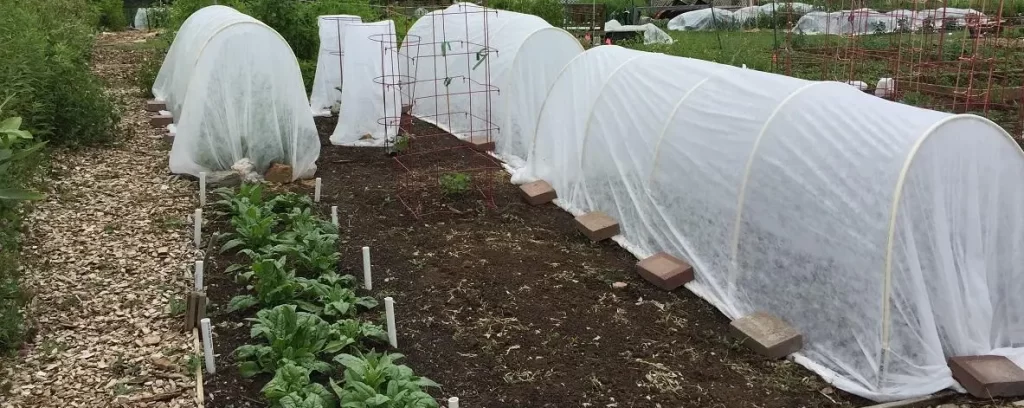
Row Cover Application Tips
- Cover Early: Place the row covers over your plants as soon as they’re planted. Flea beetles emerge early in the growing season, so it’s important to cover plants before beetles appear.
- Secure Edges: Ensure that the edges of the row covers are securely anchored to the ground to prevent beetles from entering.
Using row covers is an especially effective method for controlling flea beetles on young plants, giving them a chance to grow strong before exposure to pests.
4. Maintain Good Garden Hygiene
These beetles thrive in gardens where they have ample hiding places, such as plant debris, weeds, and unmaintained plots. Good garden hygiene can reduce these hiding spots, making your garden less attractive to flea beetles.
Garden Cleanliness Tips
- Remove Weeds: Weeds can serve as a food source and shelter for flea beetles, so remove them regularly.
- Clear Plant Debris: After each growing season, clear away old plant material, as this helps prevent overwintering of flea beetles and other pests.
By maintaining a clean garden, you reduce the habitats flea beetles rely on, naturally lowering their populations.
5. Mulch Around Plants
Mulching offers multiple benefits, including moisture retention, weed suppression, and temperature regulation. For flea beetle control, mulch can help by lowering the soil temperature, making it less appealing for adult flea beetles to lay eggs.
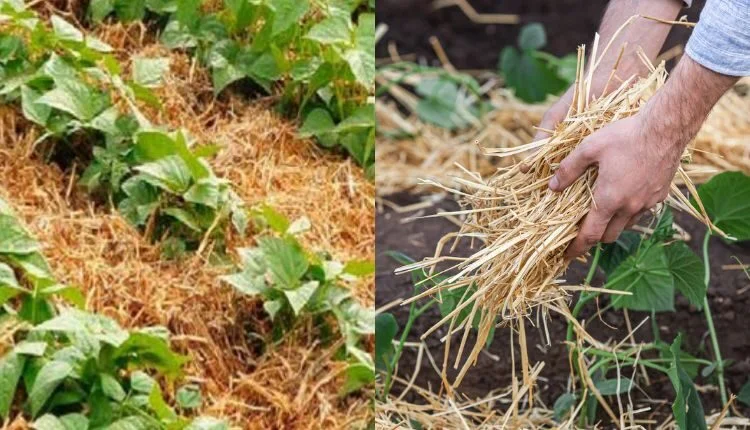
Mulching Tips
- Use Organic Mulch: Straw, shredded bark, or grass clippings work well and are biodegradable.
- Apply a Thick Layer: A thick layer (about 2–3 inches) can be effective in deterring flea beetles and suppressing weeds.
Mulching also helps keep plants healthier overall, making them more resilient to pest attacks.
6. Plant Trap Crops
Trap cropping is a technique where you plant specific crops that attract flea beetles, drawing them away from your main crops. Once the flea beetles are concentrated on these trap crops, they can be treated or removed without affecting the main garden.
Suggested Trap Crops for Flea Beetles
- Radishes: These beetles are particularly attracted to radishes, which makes them an ideal trap crop.
- Nasturtiums: These flowers not only repel pests from nearby plants but also attract flea beetles, allowing them to act as a buffer for other crops.
Trap cropping can be an organic and visually appealing way to reduce flea beetle populations in your garden.
7. Apply Natural and Organic Insecticides
If flea beetles continue to persist despite preventive measures, using natural insecticides can help keep them in check. Many organic options are effective against These beetles while being safer for beneficial insects and the environment.
Fungal pathogens, insecticidal soaps or the bacterial insecticide Spinosad can be used to reduce populations. The larvae of lacewing (Chrysopa spp.), adult damsel bugs (Nabis spp.) and some parasitoid wasps feed on or kill adult flea beetles. Some nematodes also kill the larvae that live in the soil.
Recommended Organic Insecticides
- Neem Oil: Derived from the neem tree, this oil is known for its insect-repelling properties and is effective against flea beetles.
- Pyrethrin: This natural compound, derived from chrysanthemum flowers, can target flea beetles while being less harmful to other beneficial insects.
Apply these insecticides carefully and follow the product’s instructions for safe and effective results. Using organic options helps protect your plants while maintaining a healthy garden ecosystem.
8. Chemical Control Options
Always consider an integrated approach with preventive measures together with biological treatments if available. Insecticides should be applied during the beetle’s susceptible period, that is when they appear on the leaves. Products based on chlorpyrifos work well to control populations.
9. Encourage Natural Predators
Beneficial insects play a critical role in controlling flea beetle populations naturally. By creating a habitat that attracts and supports natural predators, you can keep it under control without relying heavily on chemical treatments.
Natural Predator Encouragement Tips
- Attract Beneficial Insects: Ladybugs, parasitic wasps, and ground beetles all prey on flea beetles. Planting flowers like marigolds, calendula, and alyssum can help attract these beneficial insects.
- Minimize Pesticide Use: Avoid using broad-spectrum insecticides, which can harm beneficial insect populations.
Encouraging natural predators is a sustainable way to maintain a balanced ecosystem in your garden.
Useful Tips/Bonus Tips
- Adjust planting times (earlier or later) to avoid periods of peak adult activity.
- Plant trap crops that are attractive to the flea beetle.
- Plant non-hosts plants that repel or block insect pests.
- Add organic mulch as this interferes with the egg-laying and the larval stages.
- Monitor your plants, especially in spring.
- Supply the plants with essential nutrients in the frame of a balanced fertilization.
- Water regularly and in a reasonable manner.
- Rid your field of weeds or other host plants.
- Remove refuge sites by plowing and destroying crop residues.
Conclusion
Controlling flea beetles can feel like a daunting task, especially when these tiny pests seem to appear out of nowhere, leaving a trail of damage. However, with a combination of prevention, monitoring, and organic control strategies, you can keep flea beetles at bay and protect the health of your plants. Each of the nine tips shared in this article provides a sustainable, effective approach to managing flea beetles, allowing you to maintain a vibrant and productive garden. By implementing these strategies, you’re not only tackling the immediate problem of flea beetles but also building a more resilient garden for the future.
